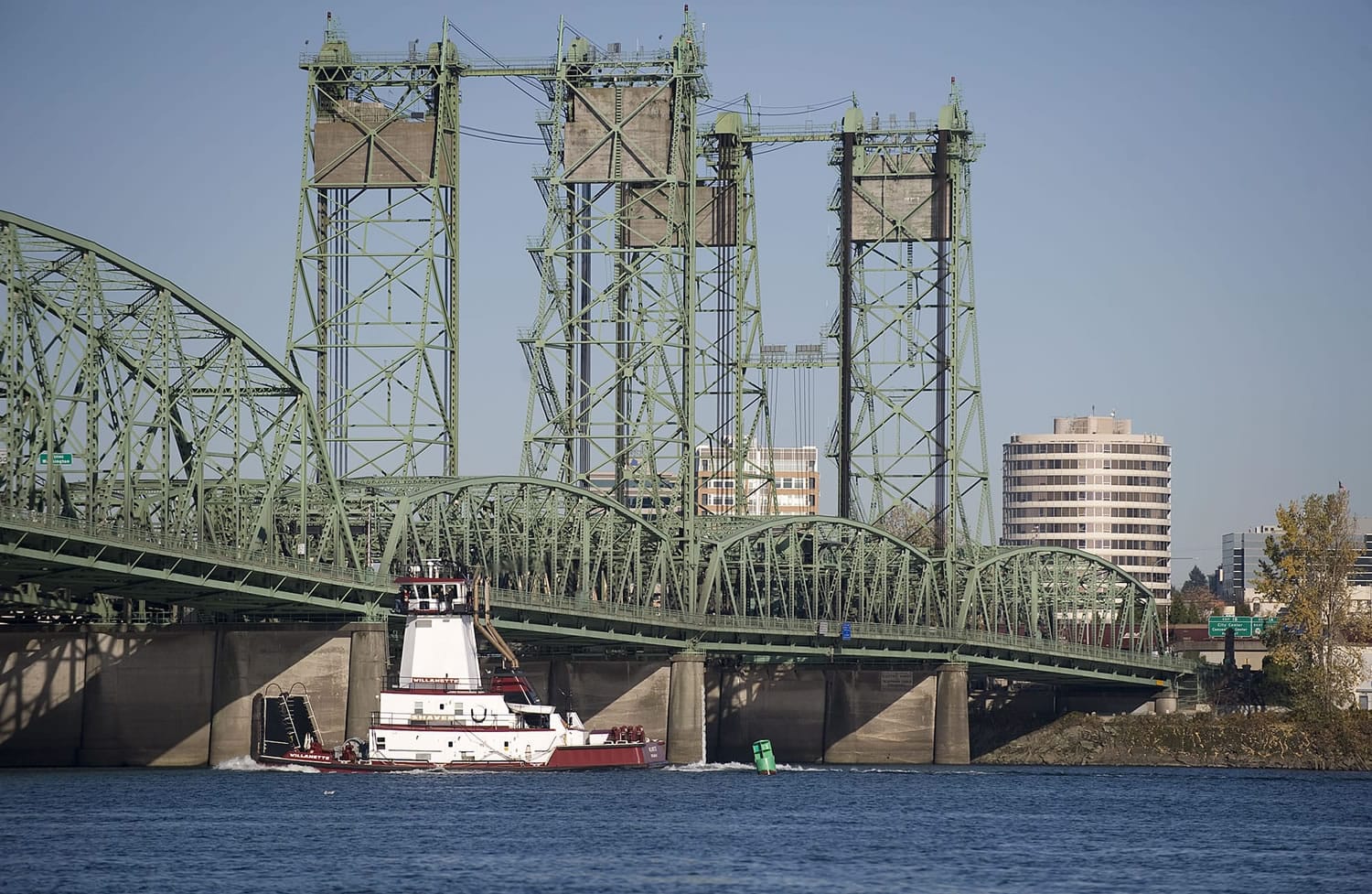The Columbia River Crossing, with a current planned height of 95 feet, is below the 116 feet of clearance needed by U.S. Army Corps of Engineers dredging vessels.
In a letter to CRC officials released Wednesday, three Republican U.S. representatives from Washington said problems with the bridge’s height could have impacts on river shipments all the way over to Idaho.
“If the USACE is unable to gain safe passage for their dredges, it could result in river closure, with the loss of millions of dollars per day to the regional economy,” read the letter signed by Washington Reps. Jaime Herrera Beutler, Doc Hastings and Cathy McMorris Rodgers, and Idaho Rep. Raul Labrador.
The Columbian first reported in March that U.S. Coast Guard officials said they were unlikely to give approval to the CRC’s plans for a 95-foot bridge, citing potential clearance issues for several river users. At least one user, Vancouver-based Thompson Metal Fab, has said it needs a minimum of 125 feet.
The representatives’ letter to project director Nancy Boyd noted that the Columbia River is the fourth largest in North America and carries more than $3 billion in cargo each year. It questioned whether project leaders — who have studies dating to 2006 that showed a higher clearance was needed — took that information into account.
“We have been advised that the CRC’s own consultant warned that a clearance of 125 feet was needed in order to avoid impediments to navigation,” the letter reads. “Was this information taken into account for design purposes?”
The lawmakers also asked project leaders to give them a clear picture on how much raising the bridge height will add to the CRC’s $3.5 billion price tag. Officials said earlier this year that it could be as much as $150 million.
Boyd said in an email that now is the “normal place and time for these discussions to occur. We have been working closely with the Coast Guard and the Army Corps since 2005 and will continue that collaboration as we finalize our permit application.”
CRC officials are conducting a study of the river’s users and collecting data about their needs, Boyd wrote, adding that the project still has to consider the air clearance for nearby Pearson Field and Portland International Airport, impacts to downtown Vancouver, and the overall cost and schedule of the project.
She called the decision for a 95-foot bridge part of a “substantial and transparent public process” that involved more than 1,000 public meetings.
Boyd said the height was included in both the draft and final environmental impact statements, released in 2008 and 2011, and that the 39-member CRC Task Force picked the 95-foot height from a maximum of 130 feet or a minimum of 65 feet because of air safety and the increased footprint a higher bridge would create.
The Army Corps of Engineers confirmed Wednesday that it will need a minimum bridge height of 116 feet.
The agency provided a Feb. 23 letter from Army Corps Colonel John Eisenhauer saying that two dredges, the Yaquina and Essayons, would be kept from critical dredging work during high water.
The CRC’s plans, he wrote, “would have serious impacts on our federal missions to maintain the navigation channel and provide emergency dredging upstream of the new bridge.”
Andrea Damewood: 360-735-4542; http://www.twitter.com/col_cityhall; andrea.damewood@columbian.com.



